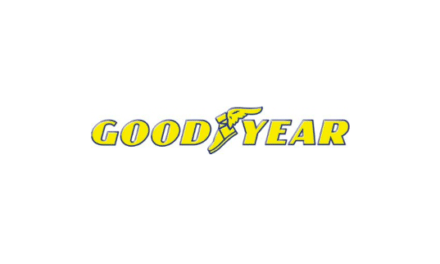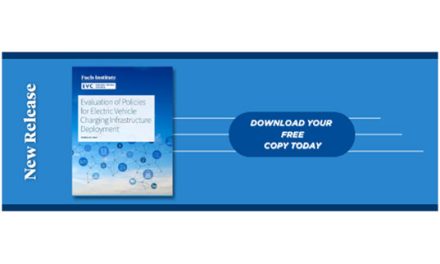By Maura Keller
The driver shortage facing the petroleum industry, and many others, is creating a challenging environment for businesses of all sizes. But rushing to fill empty positions rather than exercising due diligence when hiring transportation employees can cause problems to arise and can hinder the effectiveness and efficiency of the transportation components of your business.
According to the HireRight’s Transportation Spotlight Report, 59% of respondents noted that finding, retaining and developing talent was the top business challenge, ahead of regulations and risk management. The report found that many companies in the transportation industry are investing in digital recruiting tactics geared toward a younger and broader audience. Of the top investments for 2016, 73% of companies noted they would be putting resources toward finding qualified candidates. Referrals continue to be the industry’s leading recruiting tactic (84%), followed by online job boards (66%) and corporate websites (65%). Print media declined 9% from 2015, mirroring a noticeable shift from recruiting active drivers looking for a new job to engaging more passive driver candidates through digital channels.
Robert Rose, Editor, Transportation Management Department at J.J. Keller & Associates, said there are two key steps to take for driver selection and screening within the industry. First, create a “driver qualification policy” and develop firm standards for qualifying applicants.
As Borsecnik explained, when a company does this, it is setting the bar for minimum driver qualifications by establishing the maximum amount of risk it is willing to accept with any new driver. These standards can include the driver applicant to be a minimum age, have a minimum number of years of driving experience, have no more than a certain number of preventable accidents within the past year and/or years, have no more than a certain number of violations over a period of time, have no more than a certain number of driving jobs over a length of time and so on.
Secondly, use the Federal Motor Carrier Safety Administration’s (FMCSA) tool, the Pre-Employment Screening Program (PSP).
“The PSP makes crash records for the last five years and roadside inspection data for the last three years available to motor carriers when conducting background searches for hiring purposes,” Rose said. “This tool allows motor carriers to become more informed in the decision making regarding new hires.”
Because of the current driver shortage, it is tempting for hiring companies to fill their jobs with drivers that meet only minimum qualifications with approved background checks and a clean driving record. When it comes to selecting drivers, a strong focus should always be paid to their safety record. But driving time without incidents, background checks and assessments are just the beginning of that process.
 “During the interview portion of the selection process, there are also certain personality traits companies should be evaluating to determine if a driver is a good fit for their team,” said Brian Thomforde, owner of truckdriver.com. “Assessing traits like motivation, personality and values during this time will help determine whether your potential drivers have the right demeanor to fit in with your fleet.”
“During the interview portion of the selection process, there are also certain personality traits companies should be evaluating to determine if a driver is a good fit for their team,” said Brian Thomforde, owner of truckdriver.com. “Assessing traits like motivation, personality and values during this time will help determine whether your potential drivers have the right demeanor to fit in with your fleet.”
The best drivers want to be hired. They are also getting smarter—instead of applying for each job one at a time, or combing through help wanted ads, they want to apply for a wide variety of jobs as quickly as possible. Because of this, the best candidates today are going to online job portals that specialize in a variety of driving jobs. As Thomforde explains, today’s candidates also want to submit their application to many recruiters at one time.
According to Gary Lewis, President at Freight Exchange, a Redwood Logistics Company, the starting point for managing the driver shortage really needs to be a belief that the media hype on the driver shortage is misdirected.
“The industry needs to shift its mindset to the fact that there is a driver quality shortage,” Lewis said. “From that perspective, companies can look at their recruitment processes. We believe that one of the best practices in driver selection and screening is a simplified, easy-to-use application process that clearly sets expectations for the applicant. The best way to screen is to encourage applicants to self-select into a company’s culture and operations.”
Additionally, Lewis suggested that companies can increase screening quality when recruiter compensation ties to retention, rather than a straight number of hires.
“Also, the final say on a new hire should not be a recruiter but someone more closely tied to the driver job, such as a fleet manager or supervisor,” Lewis said.
When screening drivers or any candidate in a regulated industry like trucking or transportation, it’s important to have a consistent and clear screening process. Federal regulations require employers to obtain a motor vehicle record from every state in which a driver applicant has held a license during the past three years and a three-year work and drug/alcohol history on all applicants. Developing systems—where protocols and processes for collecting, reviewing and retaining the required documents are clear and consistent—is important for both compliance and candidate experience. Investing in more than just the minimum required screening can help with fit and retention. Using external sources that are beyond the driver’s ability to influence, such as Commercial Driver’s License Information System (CDLIS) or even criminal record searches, may give you more insight.
“Due to disparate state laws and record management systems, the process for collecting the required records for drivers can be onerous, but it must be thorough,” said HireRight’s Steven Spencer, Managing Director of Transportation. “This can create a challenge for hiring and getting drivers on the road when there is a nationwide driver shortage.”
One example that Spencer highlighted is that, when hiring commercial drivers, motor carriers will routinely contact the insurance agent to have drivers added to the business insurance policy. The agency will then run a Motor Vehicle Report (MVR) to determine if the driver meets the underwriting guidelines of the policy. In some instances, insurance agencies provide the MVRs they ordered to their clients for employment purposes.
“This practice poses considerable risk to not only the insurance agency, but also to the motor carrier as it may potentially violate consumer privacy regulations,” Spencer said.
Next Page, Click Below









